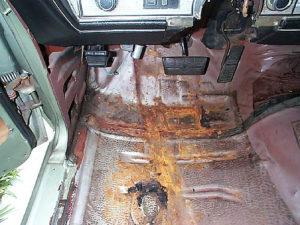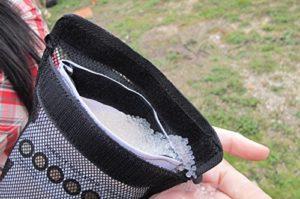Fogged windows are things we often see The condensation against the glass is caused by moisture in the car that settles on the cooler glass surface.
At the previous Concours in Apeldoorn we saw a lot of American classics after a heavy shower, which when the weather was dry and warmer, the sweat was on the inside of their windows.
Where does that moisture come from and what can we do about it? Wetness on the inside of the car can have several causes. If it only happens occasionally, you may have gotten into the car with wet clothing or the car was still damp when you entered it. Your body heat and the heating will do the rest. In that case you can use the air conditioner to blow the fan or air conditioner away. But if fogged windows are the rule rather than the exception, there is probably a leak somewhere in the passenger compartment.
This can be due, for example, to a leak at the schutboard or the rubbers of the doors and / or windows. Therefore, first feel at the foot section and under the car mats whether it feels damp there.
If it only feels a little damp under the car, you can choose to place a newspaper under the car.
The newspaper will quickly absorb the moisture present. If you change the newspaper a few times in the first few days, you can also check whether it gets wet again and again in the rain and that there is a leak. If, after a while, it feels dry under the car mats, it is possible that you simply step in with wet shoes and drive short distances. By slightly opening the window while driving, the moisture can leave the car faster.
What can you do about it?
Of course the basis is to keep the car clean and tidy. Wet surf clothing does not belong in the back seat. If a leak due to bad rubbers or another cause is found, the problem can of course be remedied. If you have not found a cause, you can place a moisture eater in your car as an effective emergency solution. Moisture eaters come in all sizes, shapes and prices.
But if fogged windows are the rule rather than the exception, there is probably a leak somewhere in the passenger compartment. This can be due, for example, to a leak at the schutboard or the rubbers of the doors and / or windows. Therefore, first feel at the foot section and under the car mats whether it feels damp there.
If a leak due to bad rubbers or another cause is found, the problem can be remedied. If you have not found a cause, you can place a moisture eater in your car as an effective emergency solution. Moisture eaters come in all sizes, shapes and prices. The condensate from such a moisture eater is salty, brine-like. Therefore, make sure that the 'drip tray' of the moisture eater does not overflow. And that the thing cannot fall over while driving. There are also moisture absorbers that absorb and report when they are full. They do not need a drip tray. If you notice when they report ...
If it only feels a little damp under the car mats, you can choose to place a newspaper under the car mats. The newspaper will quickly absorb the moisture present. If you change the newspaper a few times in the first few days, you can also check whether it gets wet again and again in the rain and that there is a leak. If, after a while, it feels dry under the car mats, it is possible that you simply step in with wet shoes and drive short distances. By slightly opening the window while driving, the moisture can leave the car faster.
Effectively solve the problem
The most common reasons of wetness in the interior are:
* Torn door seals
* Leakage through the rear light units
* A blocked air conditioner drain
* Leakage along the windshield,
* Leakage along the antenna foot mounting,
* Leakage at the seal of the moisture barrier (plastic film layer behind the door cover). If the film is torn or loose, warm air from the car makes contact with the outer door panel. Because the outside of the door is colder, condensation (moisture deposit) forms on the metal inside of the door. Because the moisture drips down through the drainage openings under the door, the possible cause is recognizable by the moisture that remains on the sill.








